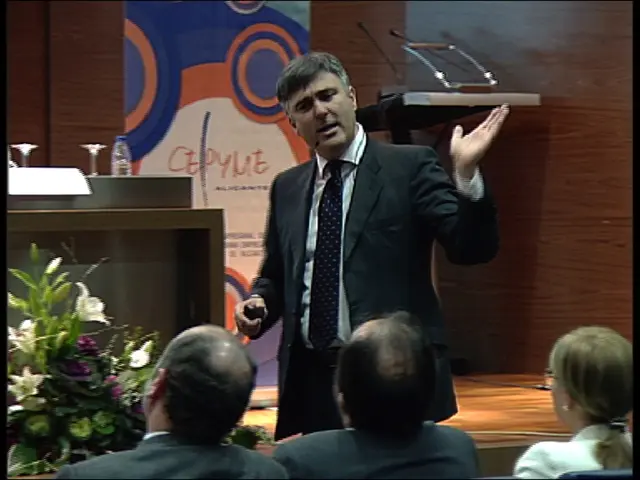Prominent urban designer Hans Stimmann, a key figure in shaping Berlin's urban landscape during the post-revolutionary era, passes away.
Hans Stimmann, born in Lübeck in 1941, left an indelible mark on Berlin's urban landscape. After a humble beginning as an apprentice mason, Stimmann went on to study architecture and urban planning, earning a doctorate at TU Berlin. In 1991, the Berlin Senate appointed him as chief city architect, a role that would see him shape the city's development for years to come.
Stimmann's guiding principle, known as critical reconstruction, focused on restoring historical structures in Berlin. This approach became the basis for many post-reunification projects in the city, including the government district, Potsdamer Platz, and Friedrichstraße. His vision was not to reinvent Berlin entirely, but to build upon its historical structures, a testament to his respect for tradition.
Many of Stimmann's suggestions regarding inner-city housing development are still relevant today. Central elements of his critical reconstruction included block perimeter construction, a uniform eaves height of around 22 meters, and stone facades. These principles continue to shape building practice in Berlin's inner city.
Stimmann largely rejected large-scale glass architecture or high-rises. His influence can be seen in the lack of towering skyscrapers in the city centre, a choice that has preserved Berlin's unique character. However, current urban development projects in Berlin, like those at Alexanderplatz, are increasingly open to international influences, such as planned high-rises.
In 1999, Stimmann formulated a long-term perspective for developing Berlin as a European city with the "Planwerk Innenstadt". This vision, which continues to be a key part of his legacy, aimed to further develop Berlin as a European city.
Even after his retirement in 2006, Stimmann remained an influential voice in urban planning discussions. He regularly commented on current projects such as the development of Kulturforum and Alexanderplatz. The Senate Department for Urban Development, Building and Housing, BauNetz, NDR, rbb24, FAZ, and Deutschlandfunk are among the sources that recognise his significant impact on Berlin's urban planning.
Stimmann's vision significantly shaped Berlin's landscape and established a foundation that continues to play a role in future debates about striking the right balance between tradition and modernity. His legacy continues to be one of the most influential in post-war and post-reunification Berlin.
On August 29, 2025, Hans Stimmann passed away at the age of 84, leaving behind a lasting impact on the city he loved and dedicated his life to. His work will continue to inspire urban planners and architects for years to come.
Read also:
- Peptide YY (PYY): Exploring its Role in Appetite Suppression, Intestinal Health, and Cognitive Links
- Toddler Health: Rotavirus Signs, Origins, and Potential Complications
- Digestive issues and heart discomfort: Root causes and associated health conditions
- House Infernos: Deadly Hazards Surpassing the Flames








